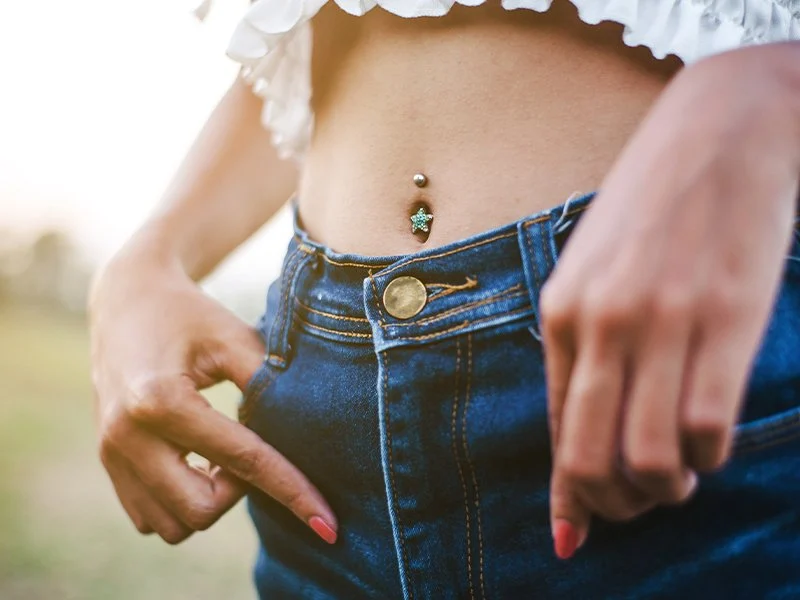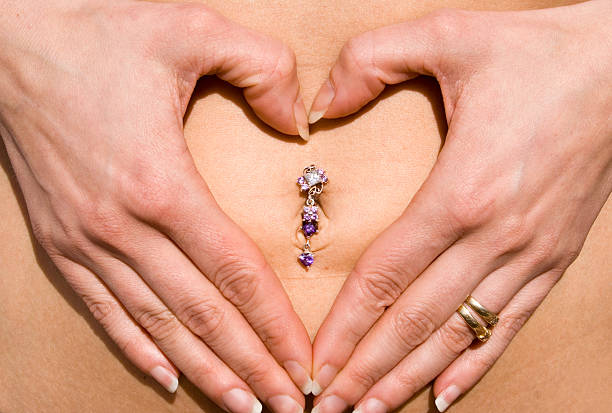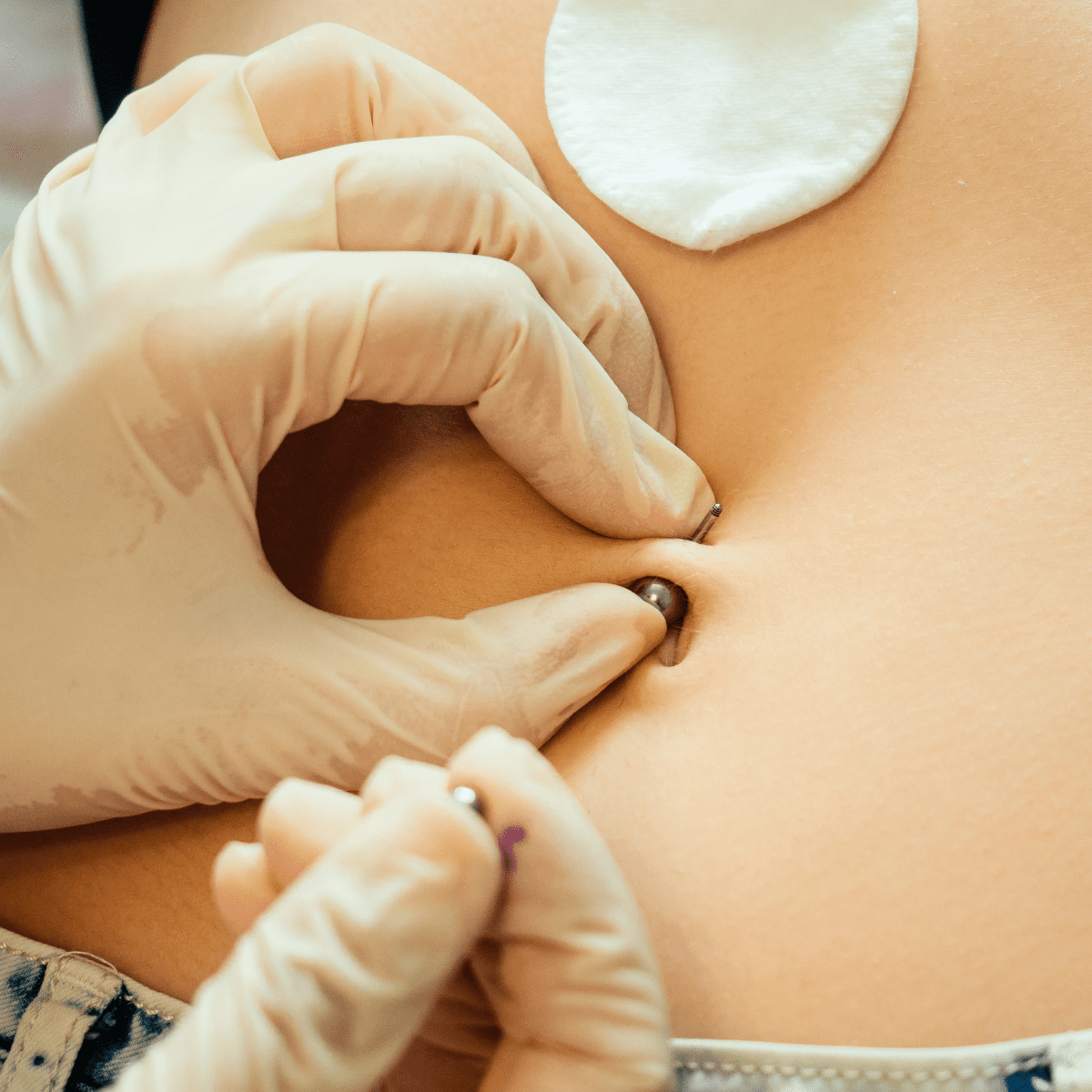Belly Button Piercing Styles to Try

Just received an abdominal button piercing to lend a 2000s aura to your look? Congratulations! But, you should be aware that such a perforation also calls for added responsibility. And it begins with knowing how to sanitize a belly button piercing to ensure it does not become crusted or get infected. This is especially essential as the abdominal button is a delicate and often-overlooked area of the body. Read this article to learn how to maintain your navel piercing by following a meticulous cleansing routine and effective maintenance guidelines to maintain its aesthetic allure and minimize the risk of complications. These tips will help you exhibit that trendy adornment confidently and comfortably. So, let’s get begun!
How To Clean A Belly Button Piercing: Steps To Follow
The abdominal cavity area is obscured and requires meticulous cleansing. It may accumulate grime, bacteria, dead skin cells, or detergent residue that can cause crustiness, vile scent, and infections, particularly if it is penetrated. Follow these detailed methods to sanitize an abdominal button piercing effectively:
1. Wash Your Hands
Always commence by cleansing your hands before the cleaning process to reduce the risk of bacterial contact. Use an antibacterial detergent, and exfoliate for at least 20 seconds.
2. Prepare A Saline Solution
Make a saline solution with 1/4th teaspoon of salt per 8 ounces of water as this formula is said to replicate the natural saline balance of the body. This will ensure the piercing does not dry out.
3. Soak A Cotton Swab Or Pad
Dip a cotton swab or pad into the saline solution until thoroughly saturated but not spilling. Use it to thoroughly sanitize the abdominal button piercing and delicately remove any residue or discharge. Avoid rotating the jewelry during this procedure as it can re-open the piercing incision or agitate it.
4. Pat Dry With A Clean Cloth
After cleansing the piercing, wipe the area dry with a fresh, disposable paper towel or a soft, lint-free cloth. Do not massage the area harshly as it can cause tangling or irritation.
How To Clean An Infected Belly Button Piercing

An infected abdominal button piercing must be treated with a delicate, cautious, and comprehensive approach. Otherwise, it may escalate to fever and shivers, impacting your overall health. Follow these effective measures to address the signs of infection and promote fast healing:
1. Spot The Signs Of Infection
Look out for tell-tale signs of infections such as edema, pain, searing sensation, excessive erythema, or the presence of odorous or blood-streaked sputum around the piercing. Seek medical aid immediately if you notice these indicators for early intervention and treatment.
2. Warm Compress
Use a good old heated compress to alleviate the infected piercing site. You can create a compress by yourself, using a clean washcloth soaked in tepid water, and massage it against the infected piercing for about 2 to 3 minutes. Repeat this process 3 to 4 times a day to drain out the infection.
3. Use An Antiseptic Cleaner
Clean the infected area with an antiseptic disinfectant about twice a day or if you find it excessively oozing, and rinse thoroughly with running water. Then wipe the area dry with a paper towel.
4. Apply Antibacterial Cream
Follow up the cleansing with a thin layer of topical antibacterial ointment specifically prescribed for the infected abdominal button piercing.
5. Do Not Remove The Navel Jewelry
Avoid removing the navel jewelry under any circumstances, as doing so may exacerbate or conceal the infection inside. Leaving the jewelry in place aides in proper drainage and facilitates effective treatment.
Read Also: Best Chinese Beauty Secrets for Gorgeous Skin
Tips To Follow While Cleaning A Belly Button Piercing

The following guidelines support a seamless and effective cleansing routine, ensuring your belly button piercing remains clean and functions as a scintillating and well-cared-for adornment:
-
Always use a moderate antibacterial detergent or sterile saline solution when cleansing the abdominal button piercing for an irritation-free process.
-
Avoid twisting, rotating, dragging, or moving the piercing jewelry too much during the cleansing process as it may reopen the incision or encapsulate any infection inside leading to an irregular recovery.
-
Never handle a new piercing with unwashed hands as it can introduce bacteria to the site.
-
Choose loose clothing to allow the new piercing breathing space and reduce irritation. Avoid constricting garments with creases or closure that may rest directly on top of your abdominal button piercing.
-
Steer clear from public pools, hot baths, or natural water bodies to minimize the risk of bacterial contamination.
-
Avoid sleeping directly on your midriff to prevent pressure or friction on the piercing site.
-
During exercises, attempt to cover the pierced openings to prevent perspiration from reaching there and causing irritation. Do clean tenderly but thoroughly after the sessions.
How Often Should You Clean Your Navel Piercing?
A belly button piercing is located in a delicate and obscured area on the body and is prone to bacterial infection. Coming up with a consistent cleansing routine is essential for the healthy maintenance of your navel piercing. Further, over-cleaning can also contribute to problems during the healing process. Hence, it is also essential to sanitize your piercing only as many times as is appropriate. The following insights can give you a decent notion on how to resolve on a cleansing frequency.
